But doing that is akin to the underground inventor who has made something and is looking for someone to buy it:
- They have no idea if anyone actually wants their thing
- They now have to force it onto people, hoping that someone will want it
In essence, when you’re asking “How do I promote my content?”, you’re in fact asking “How and where can I spam my article?”
It’s not the question you set out to ask, but it’s the question you ended up asking.
That’s not the right mentality when it comes to content promotion. So in this article, I want to reframe your mindset.
If we simplify most people’s definition of ‘content promotion’, it boils down to “getting people to click on an URL.”
But an article is simply a vessel. When we create content, we’re usually doing it in service of a larger goal: sharing an idea.
If we look at content promotion from this angle, we acquire two new perspectives:
- Your idea matters — You can’t publish any ol’ post, share it somewhere, and expect it to go viral. If you want people to check out your article, share it on social, newsletters, or communities, and earn links, your work needs to be unique and original.
- Promotion isn’t just getting people to click a link — If we remove that constraint, we unlock lots of new promotion methods. We could do things not traditionally associated with content promotion: Appear on podcasts (or make one), publish YouTube videos, speak at conferences, share freely on social media, and more.
This mindset is how we do things at Ahrefs.
The idea we want to spread is that Ahrefs is the best-in-class SEO tool. Every piece of content we produce is a vessel for that key goal. That’s why we don’t ‘promote’ content per se; we just aim to spread that idea. We do so by:
- Publishing tons of articles on our blog
- Making YouTube videos
- Appearing on podcasts
- Sponsoring and speaking at conferences (+ running our own)
- Running in-person workshops and online webinars
- Sponsoring creators
- Managing a community
- Publishing a weekly newsletter
Getting people to see your idea means acquiring an audience. There are really only three ways to do this:
There’s no better way to promote your content than having the ability to share it with hundreds or thousands of people in one go.
Building an audience means people take action to follow you specifically: They could be subscribing to your newsletter or podcast, following you on X, connecting on LinkedIn, etc.
Not all are made equal, however, and my honest opinion is that you should focus on building an email list.
Reason being: No matter how big your audience is on social, you’re still at the mercy of the platforms. Go against their rules and you can be shut down anytime. Or they may tweak their algorithms and end up suppressing your content.
On the contrary, an email list is forever yours. You can contact them anytime as long as they give you permission.
So, even if you have a large social following, you’ll want to regularly get them to subscribe.
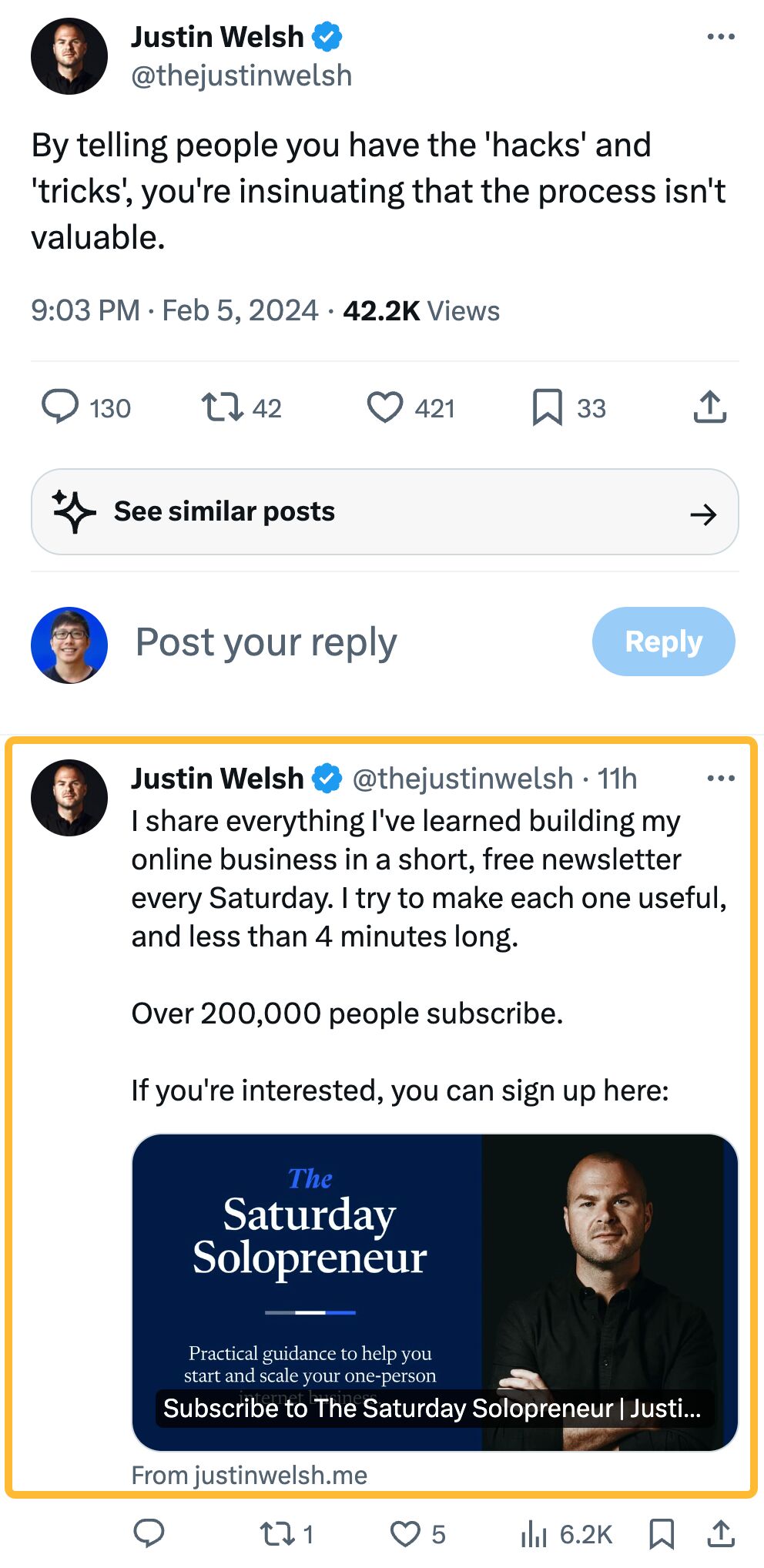
The key ingredient to building an email list is giving people a good reason to subscribe. That’s the reason why many businesses try to entice people by offering a ‘carrot’. This carrot could be an eBook, a PDF version of the post, or even an email course. For example, Intercom offers a free eBook at the end of their posts:

It doesn’t have to be that complicated, by the way. Trust can be a good reason too. Sometimes the best reason can simply be to “see more of the good ideas you’re sharing”.
It works for Justin Welsh. His call-to-action is simple and he has >200K subscribers:
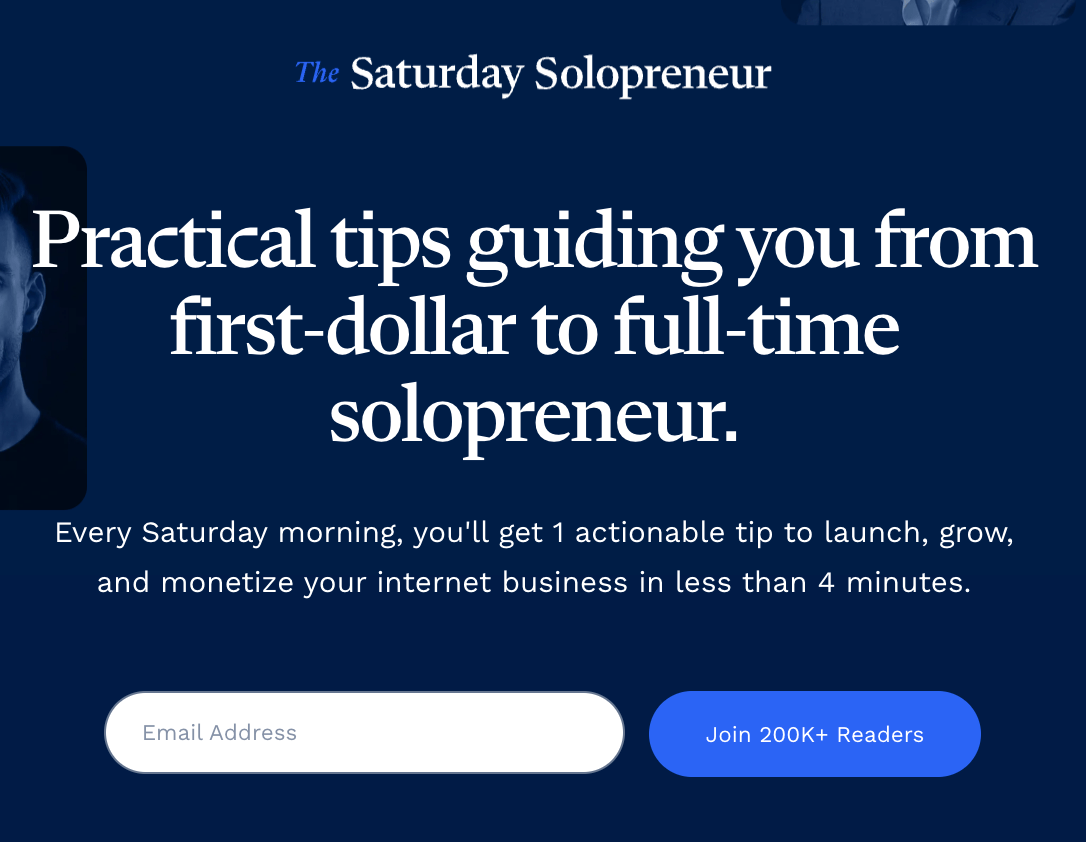
No audience? No problem. We can borrow them from major platforms like Google, YouTube, Reddit, and more.
Borrowing an audience simply means finding places where your target audience already hangs out online; if you play by their rules, you have a chance at getting your content in front of them, even if they don’t know who you are or follow you. For example, you could be optimizing your content for search, posting interesting stuff in relevant subreddits, or publishing videos on YouTube.
In my opinion, the best place to borrow an audience is Google. Search traffic is predictable, compounding, cheap, and targeted. For us, it’s our main traffic driver too.
If you want to rank high on search engines, you need to optimize for it. On a basic level, that means:
- Finding out what people are searching for
- Giving them what they want
- Proving to Google it deserves to rank
Find what people are searching for
If you want search traffic, you’ll need to write about topics people are actually searching for on Google. In SEO, we call this keyword research. The easiest way to get started is to use a keyword research tool like Keywords Explorer.
Enter a keyword relevant to your website and go to the Matching terms report. So, if you’re an online store selling coffee equipment, a potential keyword might be “coffee” or “french press”.
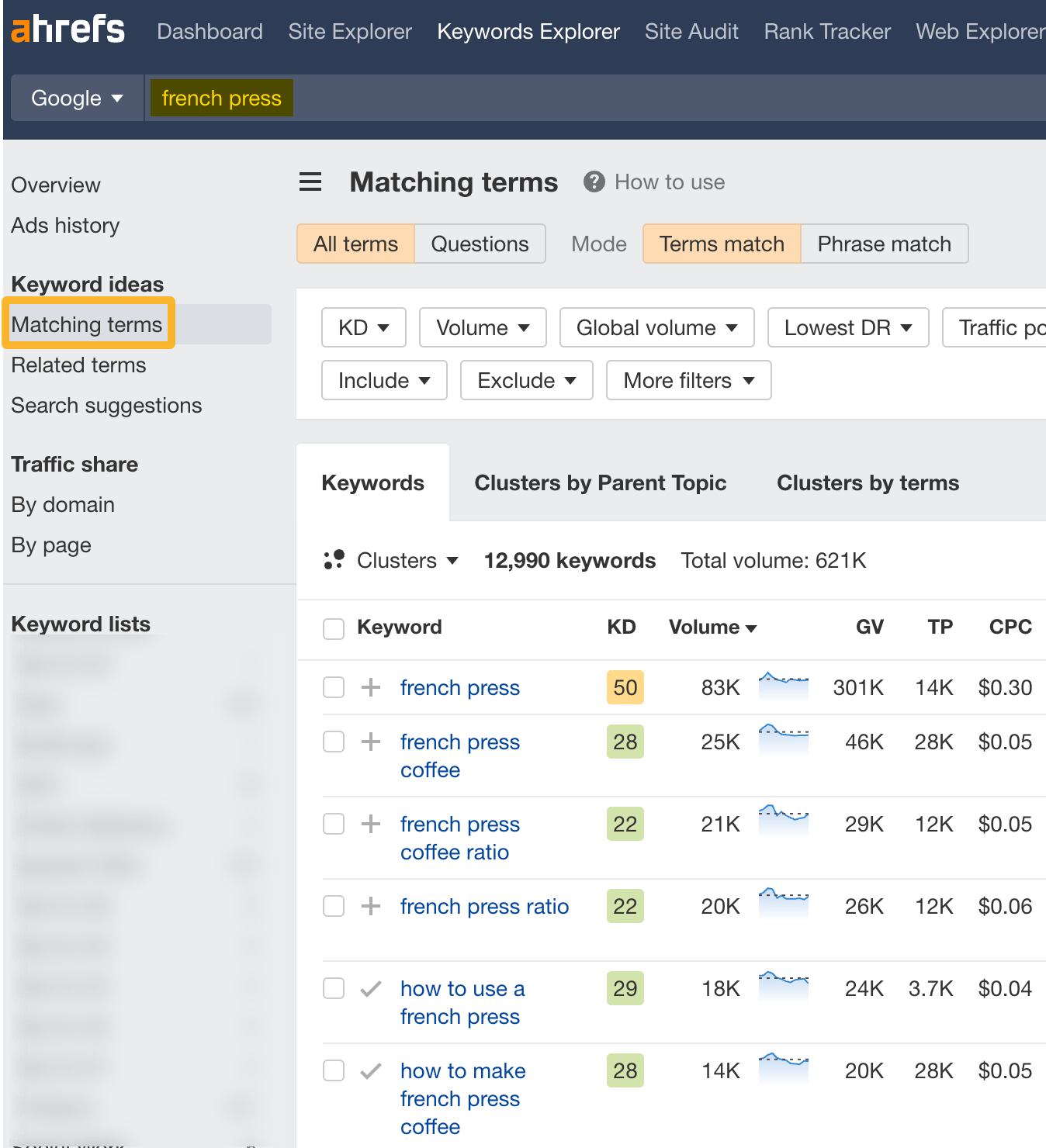
This report shows you keyword ideas that contain the word “french press.”
From here, you’ll want to look through the report and see if there are any potential keywords you could target. For example, “how to make french press coffee” seems like a good keyword we could target for our coffee equipment store.
Give them what they want
Knowing why a searcher is looking for that particular keyword can help us create content that they want to see. This ‘why’ is known as search intent.
Since Google already ranks the most relevant results for any keyword, we can look at the top-ranking pages to figure out search intent. So, if we look at the SERPs for “how to make french press coffee”, we can see that searchers are looking for a how-to guide on making french press coffee:

Additionally, from the featured snippet, we can also see searchers want to see a step-by-step format:
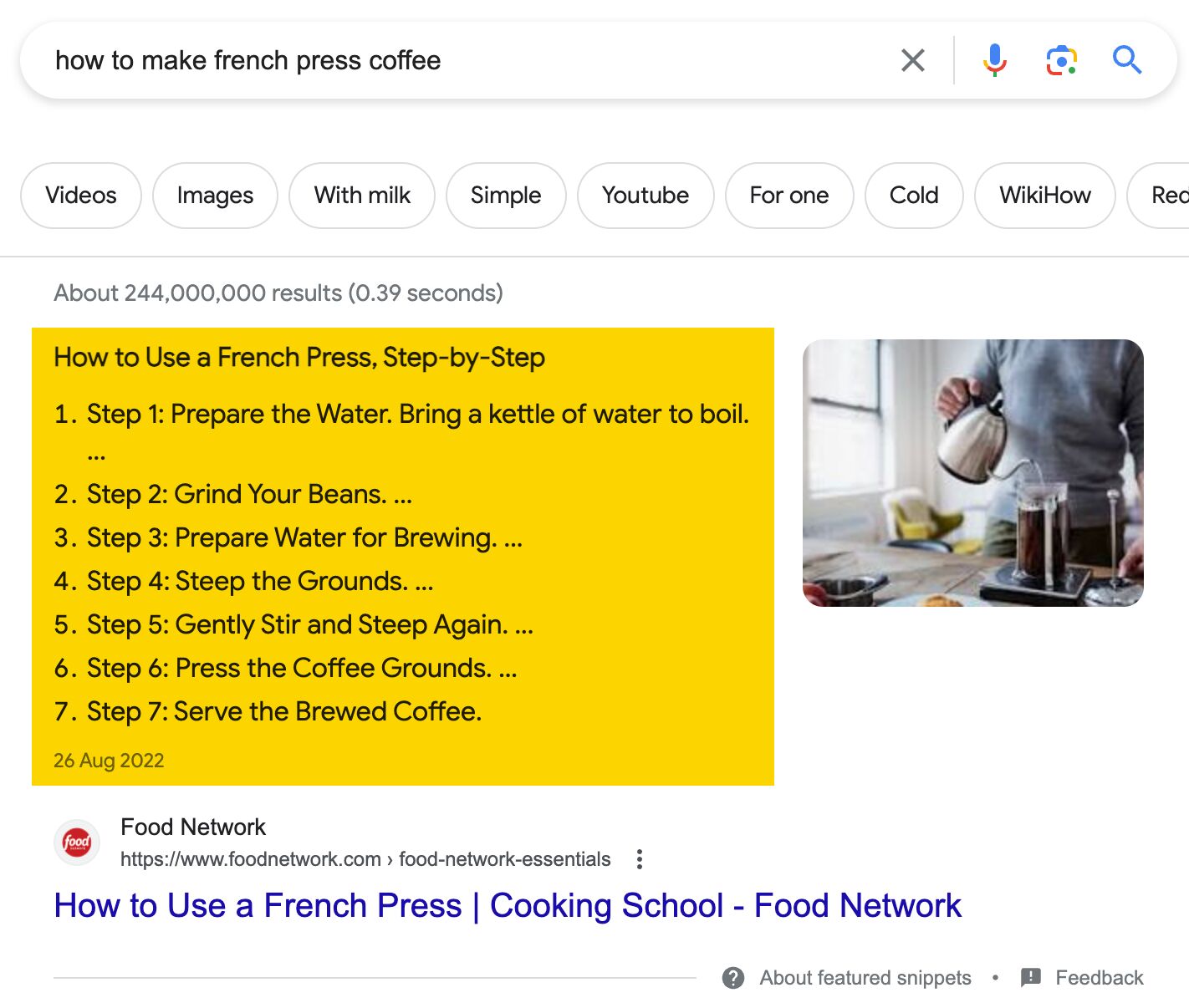
So, if we want to target this keyword, we’ll do well to create a step-by-step guide on making french press coffee.
Finally, a quick glance at the People also ask section gives us some ideas on additional questions we might want to answer in our content:
- How much coffee do I put in a French press?
- How long do I let French press steep?
- Is French press a good way to make coffee?

Prove to Google it deserves to rank
To demonstrate this, you need links from other websites. This is because Google sees links as votes. The more websites that link to you, it tells Google your page is ‘important’. This gives Google more incentive to rank you higher.
This concept is essentially Google’s PageRank in a nutshell, and it’s the reason why they leapfrogged other search engines to become the one we use most today.
To acquire backlinks, you need to give people a reason to link to you. Every link building strategy is a variation of a reason. For example:
- Guest blogging: I give you a free piece of content and you link to me
- Broken link building: I point out that you’re linking to a dead page and offer you a better resource to link to
- Podcast link building: I offer free insights as a guest on your podcast and you link to me
- Skyscraper Technique: I have the most comprehensive piece of content on the planet and you link to me simply because I’m the best
- Unlinked mentions: You actually already mentioned me but didn’t add a link. Will you please? Pretty please?
You can decide how well each reason works for your specific case. It also depends on your industry. For example, the Skyscraper Technique works on a pretty flimsy reason (in my opinion) and it has also been beaten to death in most niches. So, even though it still works to some extent, most people will ignore your email.
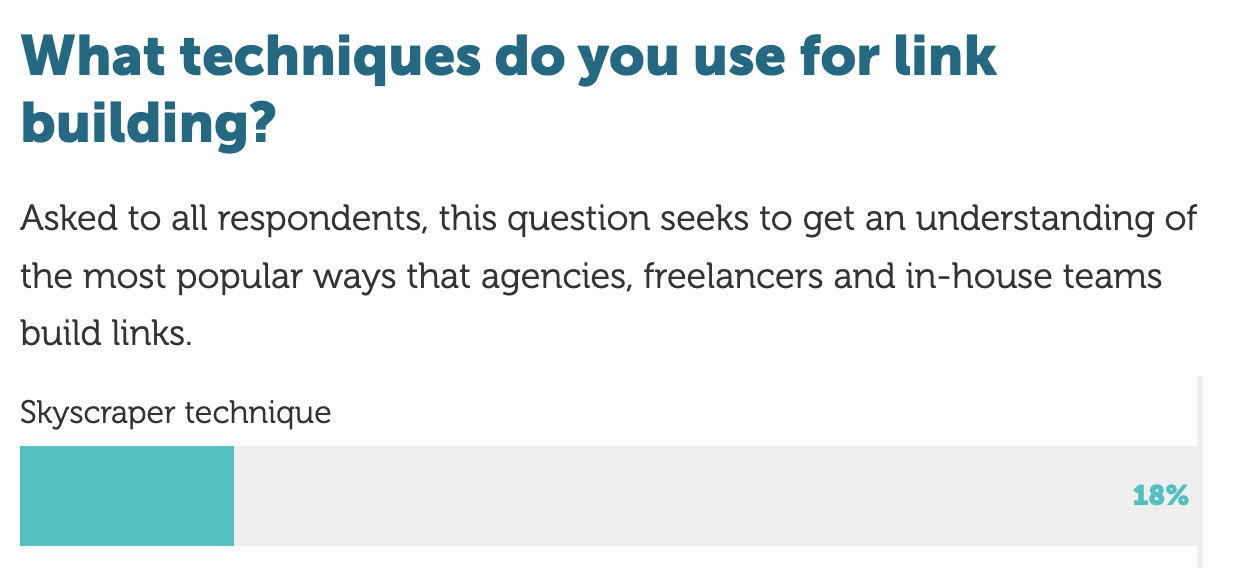
Most importantly, what works—and will always work—is the idea behind your content. It goes back to what I said earlier: Your ideas matter. If you’re presenting unique data, original insights, or tell a personal story that no one has heard of, it wouldn’t be as difficult to acquire the backlinks you need.
See how I just linked to Aira? That’s because they had unique data no one else had.
Tim Ferriss writes, “If you’ve got enough money to solve the problem, you don’t have the problem.”
He’s right. If you have the budget, you can simply pay for eyeballs on your idea. You can do this in various forms: Google Ads, ads on social media (Facebook, Instagram, TikTok, etc.), display ads, or heaven forbid (!), offline ads. You can also sponsor influencers and creators, like we did.
If you’re worried about it being too expensive per click, you can consider lesser-known ad platforms. For example, we run ads on Quora:
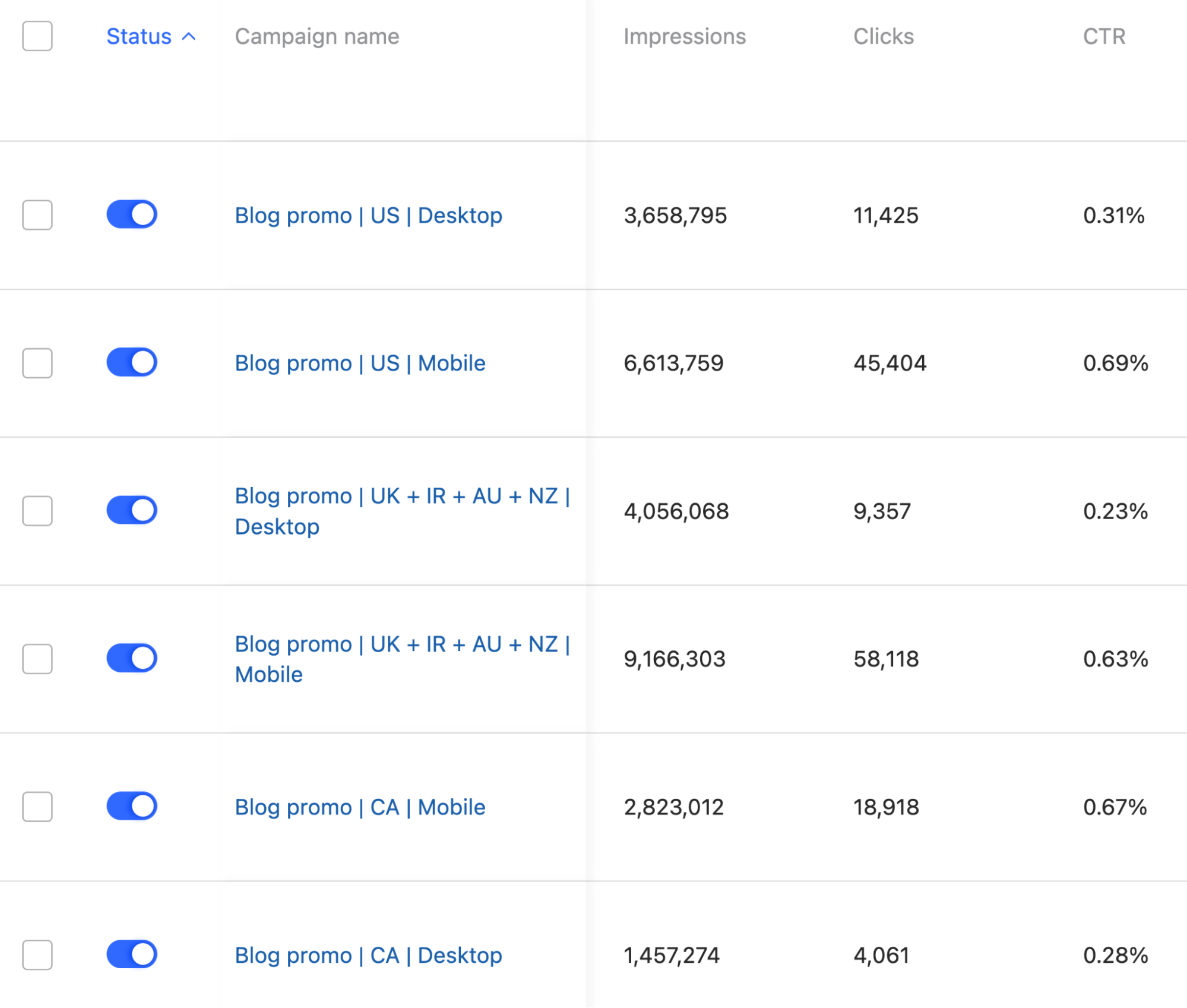
The beauty of ads, specifically pay-per-click (PPC) ones, is how fast it is. Not only is it fast to set up, it’s also fast in terms of feedback—You can set up a campaign and see if it’s working (almost) immediately. That gives you a lot of room to experiment and see what changes are effective.
The downside, however, is that ads are not infinitely scalable. Especially so if you’re using it to ‘promote content’, where the return on investment (ROI) may not be immediate. Which means you’ll always need to be spending money.
So, even if ads are a go-to for you, you’ll want to drive that traffic into an email list or build out an SEO strategy for your site.
We’re the perfect example here—Our blog traffic costs an estimated $796,000 per month, IF we were to target all the keywords we rank for on Google Ads.
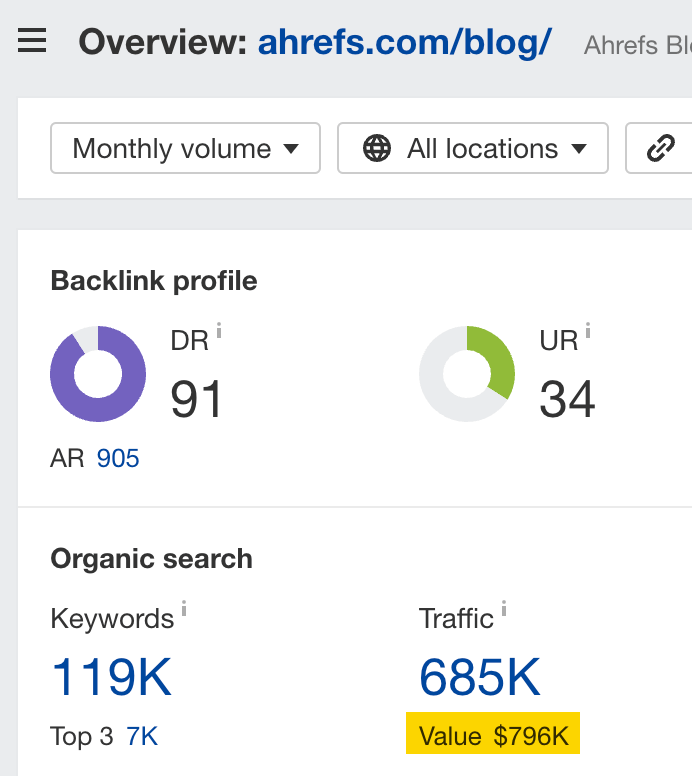
Our content team of six are obviously not paid that much in salaries, so we’re saving a lot in terms of marketing budget.
Final thoughts
Content promotion isn’t about pushing an article into the void, hoping for engagement. Your article is merely a vessel; your end goal is to share a valuable idea with the world.
Thinking of promotion from that perspective will open up your world in terms of potential distribution channels. You no longer have to rely on the XX promotion tactics you find online, all dedicated to securing that one click.



